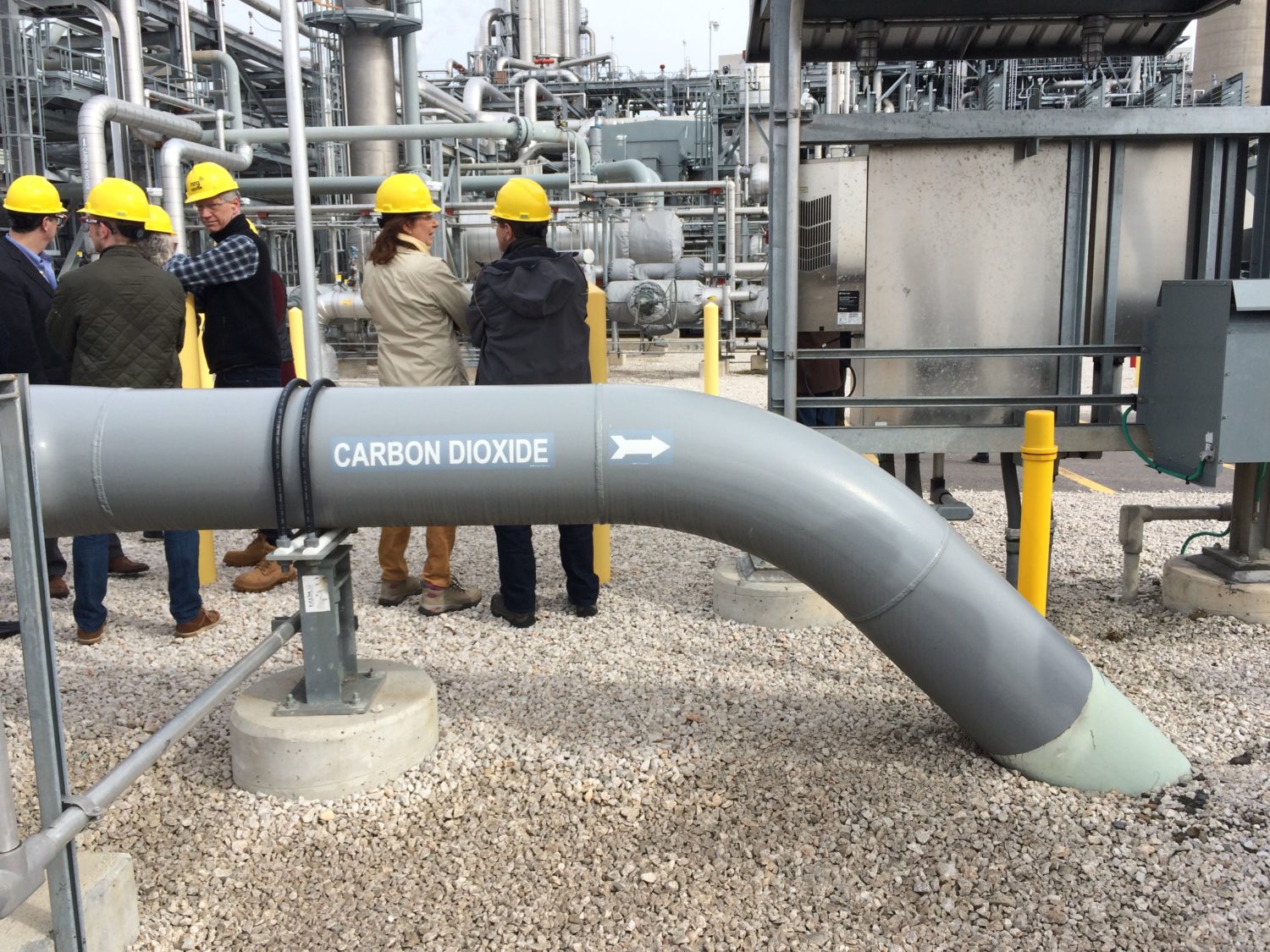
Leveraging Enhanced Oil Recovery for Large-Scale Saline Storage of CO₂
Leveraging the demand for CO₂ from the Enhanced Oil Recovery (EOR) industry is a critical step to building out a robust ecosystem for large-scale CO₂ storage in saline sites. Frequently asked questions below provide perspective on the role that EOR plays in enabling carbon capture & storage (CCS) technologies to achieve the scale necessary for significant climate-change mitigation.
FIGURE 1: Stacked Storage Operations
Why do we need EOR? Why not just store all captured CO2 in saline sites from the outset instead?
Absent enactment of climate policy, saline storage will not develop on its own because EOR is more profitable: Currently no regulations compel storage of captured CO2 in saline sites and, in the absence of such regulation, there are insufficient economic drivers in the private market to do so. While the 45Q tax legislation offers a $50/tonne credits for saline storage of CO2 it can only be claimed for 12 years after the project starts to store CO2, making the tax credits a limited source of income on which to base an investment decision. By contrast, storing CO2 through EOR offers a relatively larger economic benefit: the $35/tonne tax credit plus a revenue stream from the sale of CO2. And, the income stream from the sale of CO2 would continue to exist even after the tax credits expire 12 years later.
EOR can help reduce the cost of saline storage through “learning by doing”: EOR is by far the biggest existing market for CO2 and can absorb millions of tons of anthropogenic CO2 emissions. Since the 1970’s the U.S. EOR industry has injected close to 1 billion tonnes of CO2.1 More than 5,000 miles of CO2 carrying pipelines already exist in the U.S.2 Just as the unprecedented levels of demand for solar photovoltaics from Germany enabled Chinese suppliers to consistently reduce manufacturing costs as they made more and more solar cells, similarly the EOR industry must be leveraged as the present-day economic driver to lower the costs of CCS technologies. No other market (E.g., food or beverage manufacturing) can drive high enough volumes of CO2 demand to enable similar technology cost reductions through learning-by-doing.
Almost all of the EOR infrastructure can be repurposed for saline storage via “stacked storage”: EOR can enable buildout of capture, transport and storage infrastructure that could subsequently be repurposed for saline storage through “stacked storage.” Think of sub-surface geology in layers. There are non-oil bearing saline reservoirs that may be able to accept CO2 above and below EOR reservoirs. See Figure 1. Often times, saline formations exist right beneath EOR sites. These formations already have an impermeable cap rock, making the site a good candidate for saline storage, just as they would be for CO2 storage via EOR. Stacked storage allows repurposing much of the infrastructure such as CO2 transmission pipelines that already connect areas of large CO2 emission sources with areas with large CO2 sinks. See Figure 2. Sources that already have carbon capture equipment can continue to supply their CO2 to the same destination to be stored in saline formations instead of through EOR. At the project level, existing wells could be repurposed to inject CO2 through perforations at different intervals for saline storage, although it would mean meeting additional regulatory requirements.
FIGURE 2: Infrastructure Developed for CO2-EOR can be Repurposed For Saline Storage
What would stop EOR operators from continuing to perform EOR, producing more and more oil forever?
According to the 1.5°C report recently published by the Intergovernmental Panel on Climate Change (IPCC), in addition to all other zero- and low-carbon technologies, depending on the scenario the world must store between 350 billion and 1.2 trillion tonnes of CO2 through CCS.3 However, the estimated CO2 storage capacity through EOR globally is limited to only 140 billion tonnes.4 The “climate math” makes it clear that it would not be possible to store all the necessary captured CO2 emissions through EOR only and that the vast majority of captured CO2 must be stored at scale in saline formations. In the U.S. context, southern saline sites have the capacity to accept close to 6 trillion tonnes of CO25 whereas EOR in the same region is limited to approximately 5 billion tonnes of CO2,6 cumulatively. This represents a finite amount of CO2 storage that will reach capacity in the timeframe by which we will need saline storage.
Even as we continue to use EOR to build out a significant portion of the necessary infrastructure for saline storage, EOR operations will likely evolve for the better. EOR operators can be encouraged to store more CO2 per barrel of oil recovered through policies.
What alternative pathways exist to make saline storage affordable without relying on EOR?
Driving the development of large-scale infrastructure for capture, transport and storage of CO2 as well as lowering CCS technology costs through learning by doing, will require massive amounts of capital. To achieve this with public money, through carbon tax or carbon pricing or any other tool, would mean making up for the difference in incentives that would have otherwise been provided by the private sector.
Carbon pricing has been met with political resistance due to the perception that it will entail exorbitant costs and economic ruin. Needless to say, enactment of significant carbon pricing in the near-term seems unlikely.
A strategy that does not leverage private capital to kickstart the required CO2 storage ecosystem risks failing to capture and store one trillion tonnes of CO2 available through saline storage dooming the planet to a scenario that will likely fail to limit warming to 1.5°C. Hence, the real question is whether we can afford to wait for a carbon price high enough to drive saline storage without utilizing EOR as a bridge?





